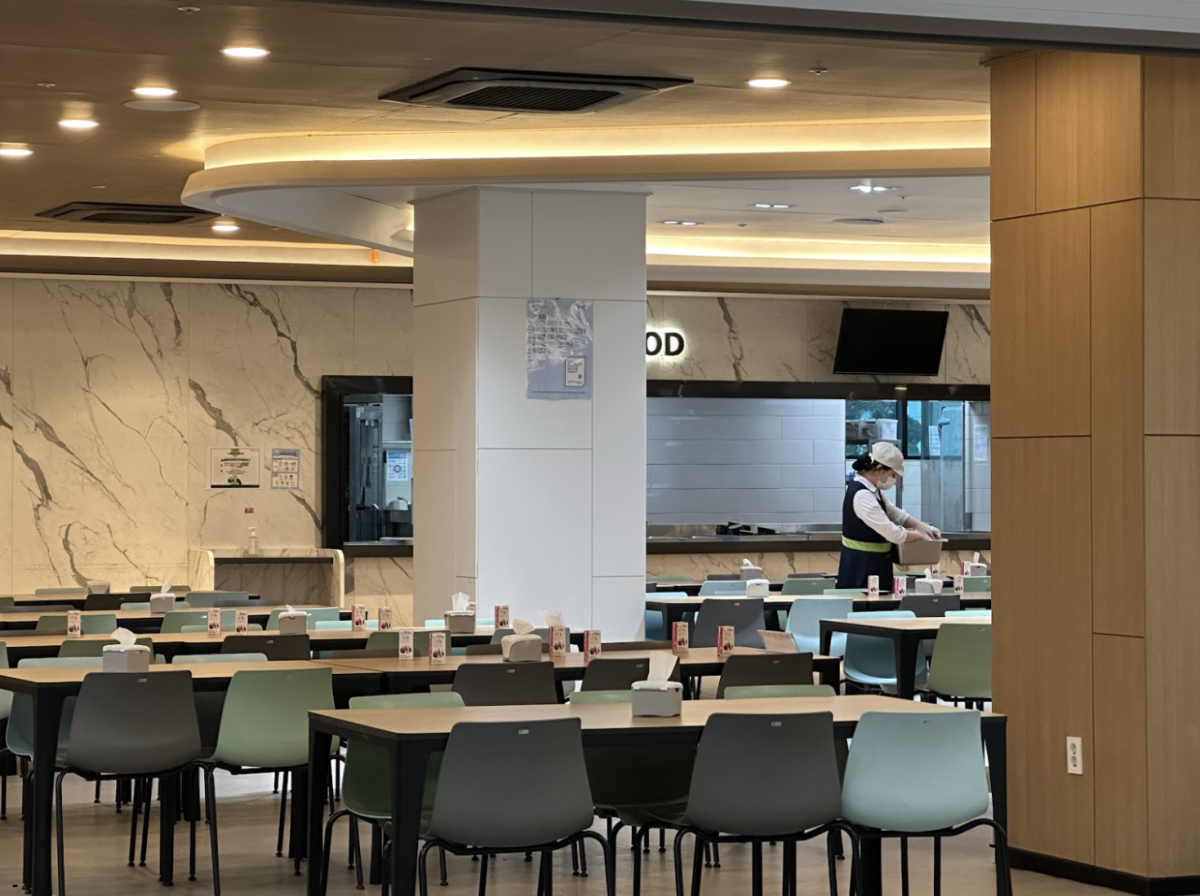When students enter the cafeteria after three class periods of exhaustion, many immediately groan at the menu options presented to them. It is commonplace for students to complain about the lunch relentlessly, deeming the serving sizes too small or the meals too distasteful, so much so that some may even opt to bring food from home or purchase a snack at the school store as a replacement.
It is understandable to some extent for students to frown at their lunch options at the cafeteria. Some days, meals look or taste displeasing, and the lack of choices on certain days may lead to frustration, particularly on days when only one meal choice is offered.
These emotions are not uncommon. In fact, on a poll conducted on the Tiger Times Online Instagram page, 52 percent of the student respondents reported not being satisfied with the school lunch, with one respondent arguing that SIS should change its caterer.
Nevertheless, I argue that lunch at SIS is significantly better in comparison to other schools in terms of nutrition, options, and taste. It may be time for students to consider and enjoy the numerous benefits and privileges of the school lunch that students at other schools are not able to have.
Firstly, SIS has a wide array of food options on most days. In addition to the international or Korean menu that students may choose from, they also have the option of eating from the snack bar, which offers side menus from various types of noodles and salad options. These options can compensate for the nutrition that the Korean and international menus may be lacking. Takeout is also another popular choice for students, allowing them to eat meals such as sandwiches and noodles outside of the crowded cafeteria.
In addition to the variety of options, SIS lunch also tends to supply a well-balanced meal. The daily meals contain a source of protein, vegetables, carbohydrates, and fiber. This is a benefit to SIS lunch, as Time Magazine reported that only 15 percent of high school students in the US attended schools with three or more of the United States Department of Agriculture’s nutritional environment recommendations in place, such as offering more fruits and vegetables. This demonstrates a nutritious standard that many schools do not meet, as many schools simply serve one type of food to all students.
While students frequently point out the serving size as a problem, the school lunch actually provides more than enough. The serving provided is already satisfactory enough for many, and if students desire more food, they are welcome to unrestricted seconds, thirds, or even fourths of the lunch menu. With the various side dishes that students can also choose to select, most do not have an issue feeling full by the end of the lunch period.
Another extensive measure that the J&J carried out was a monthly student survey to gauge how students felt about the menu. The survey asked what type of dishes in various categories from protein to carbs, students liked and disliked the most, as well as provided a space for students to leave any general comments. While many students did not fill out this survey, it still offered an opportunity for students to contribute to improving the lunch menu.
“I think the school lunch has improved a lot over the past few years, with the survey responses and improvements in accordance with the students’ feedback,” Woosung Choi (11), school lunch enthusiast, said. “I think the cafeteria lunch ladies care about the food that they are giving out, and I think the food is not as bad as some people say it is.”
Taking into account the numerous favorable aspects of the SIS lunch, especially in comparison to other schools around the world, students should reconsider the quality of SIS lunches. Perhaps they are not as horrendous as many say it is.


